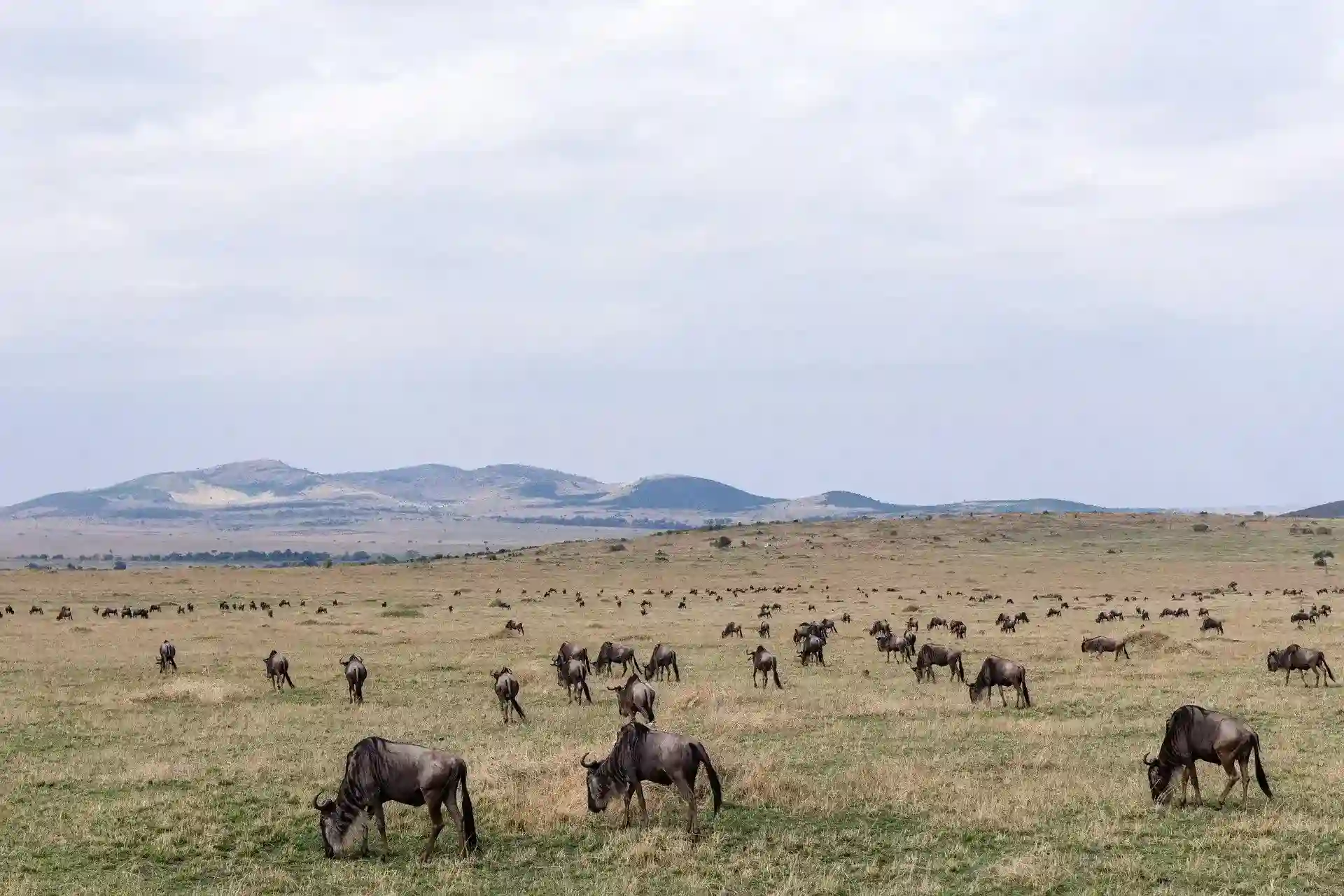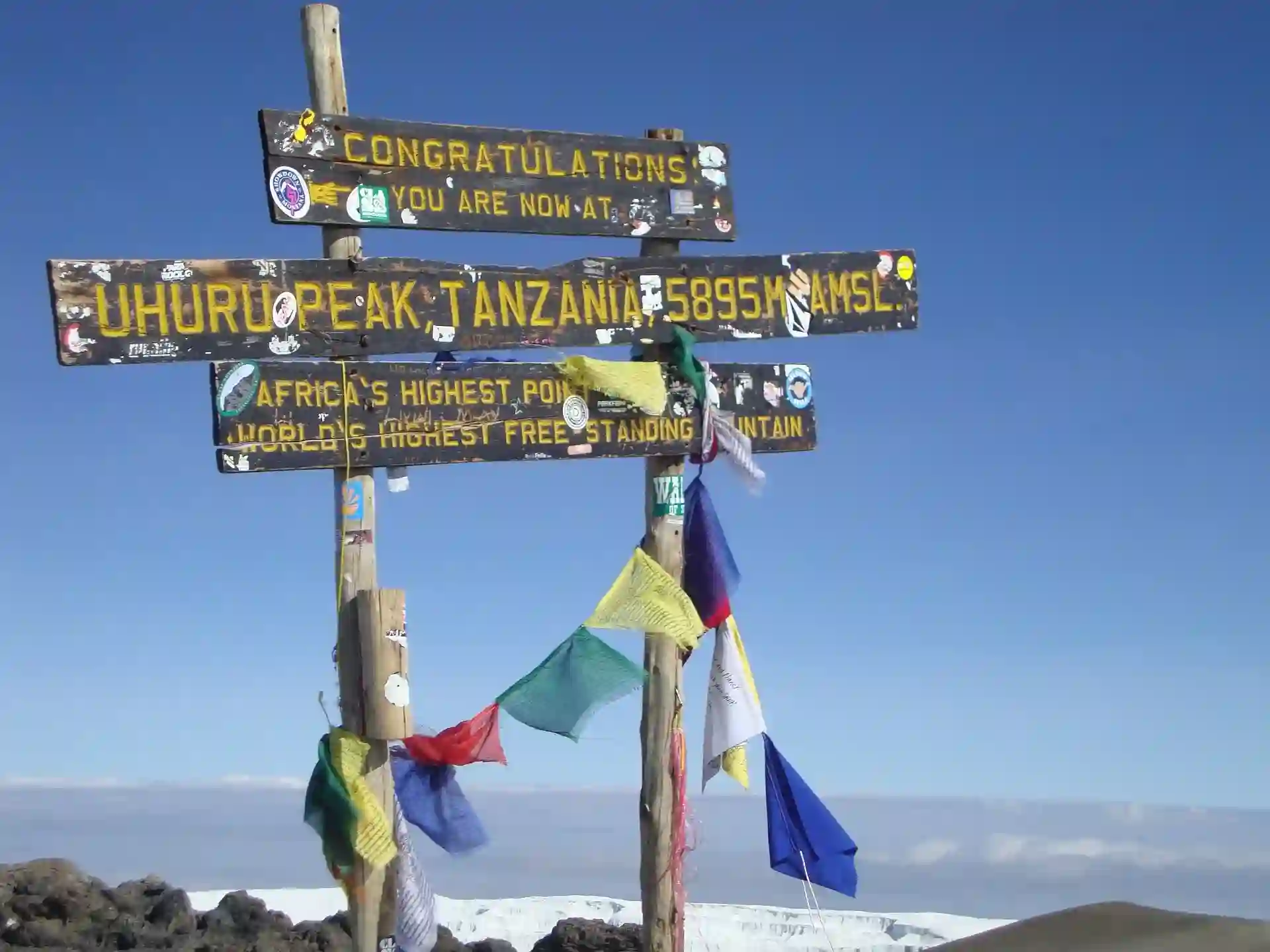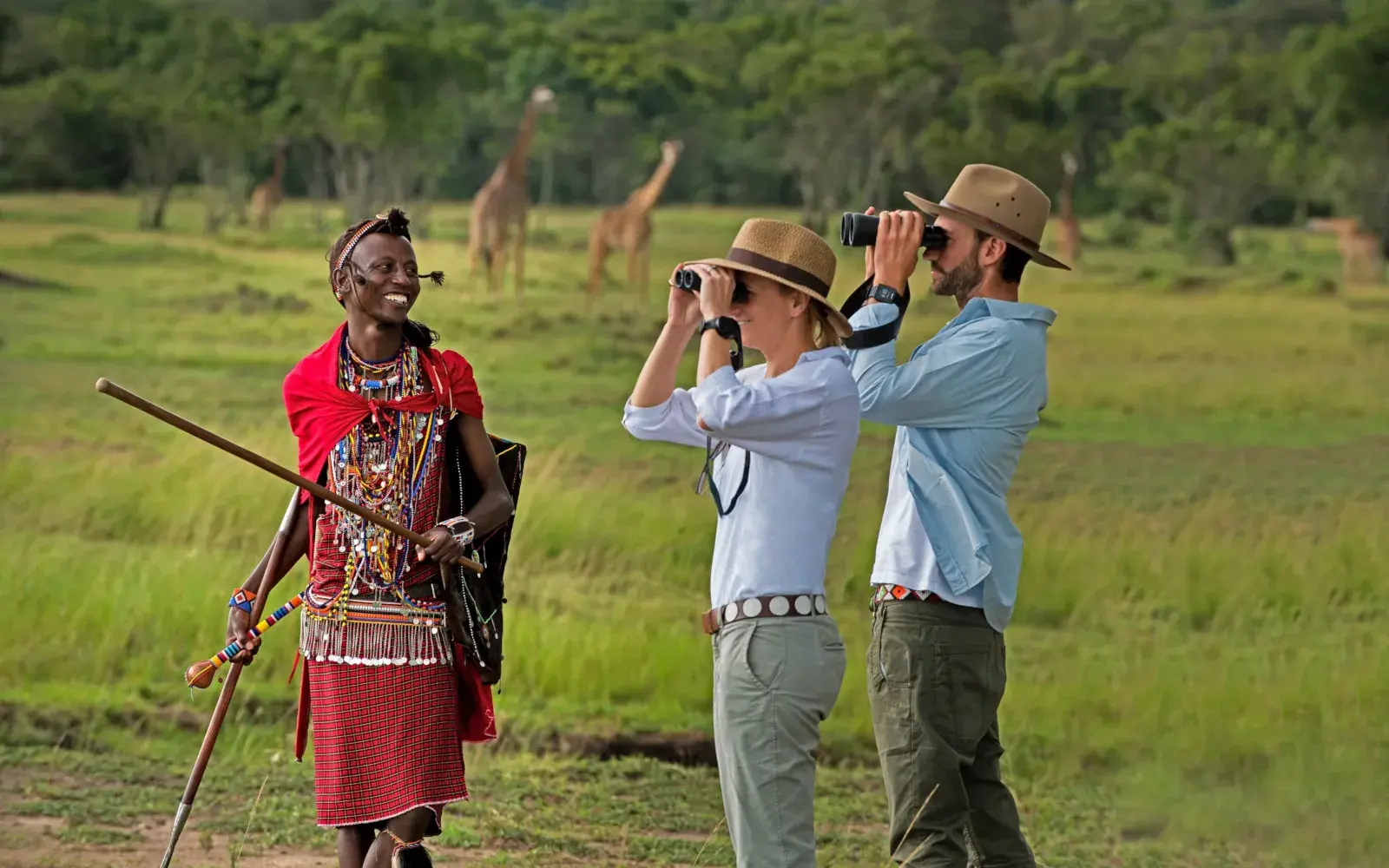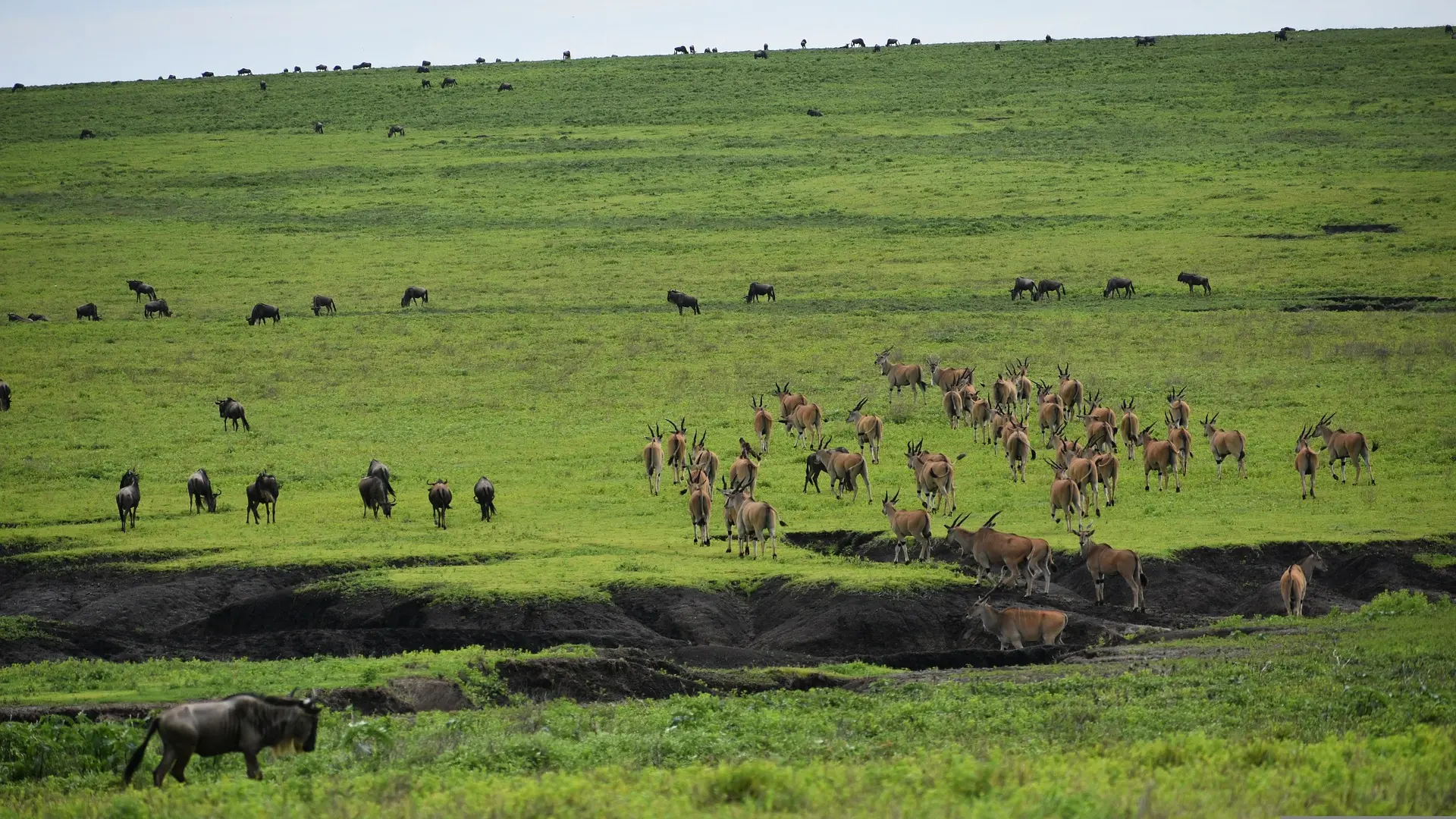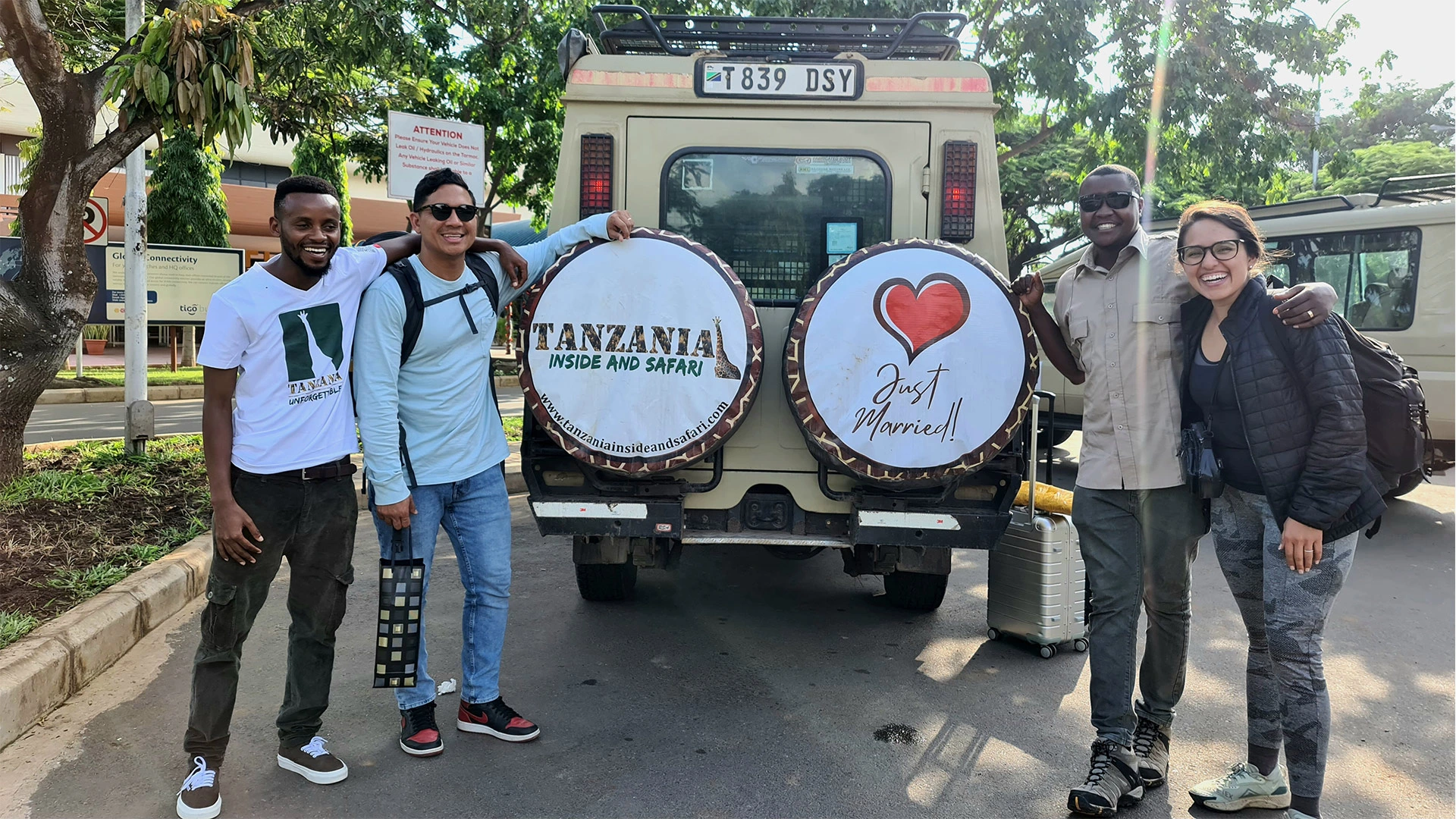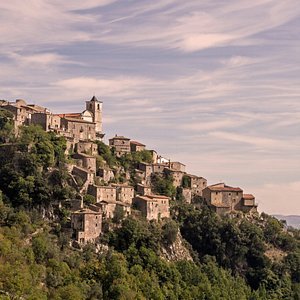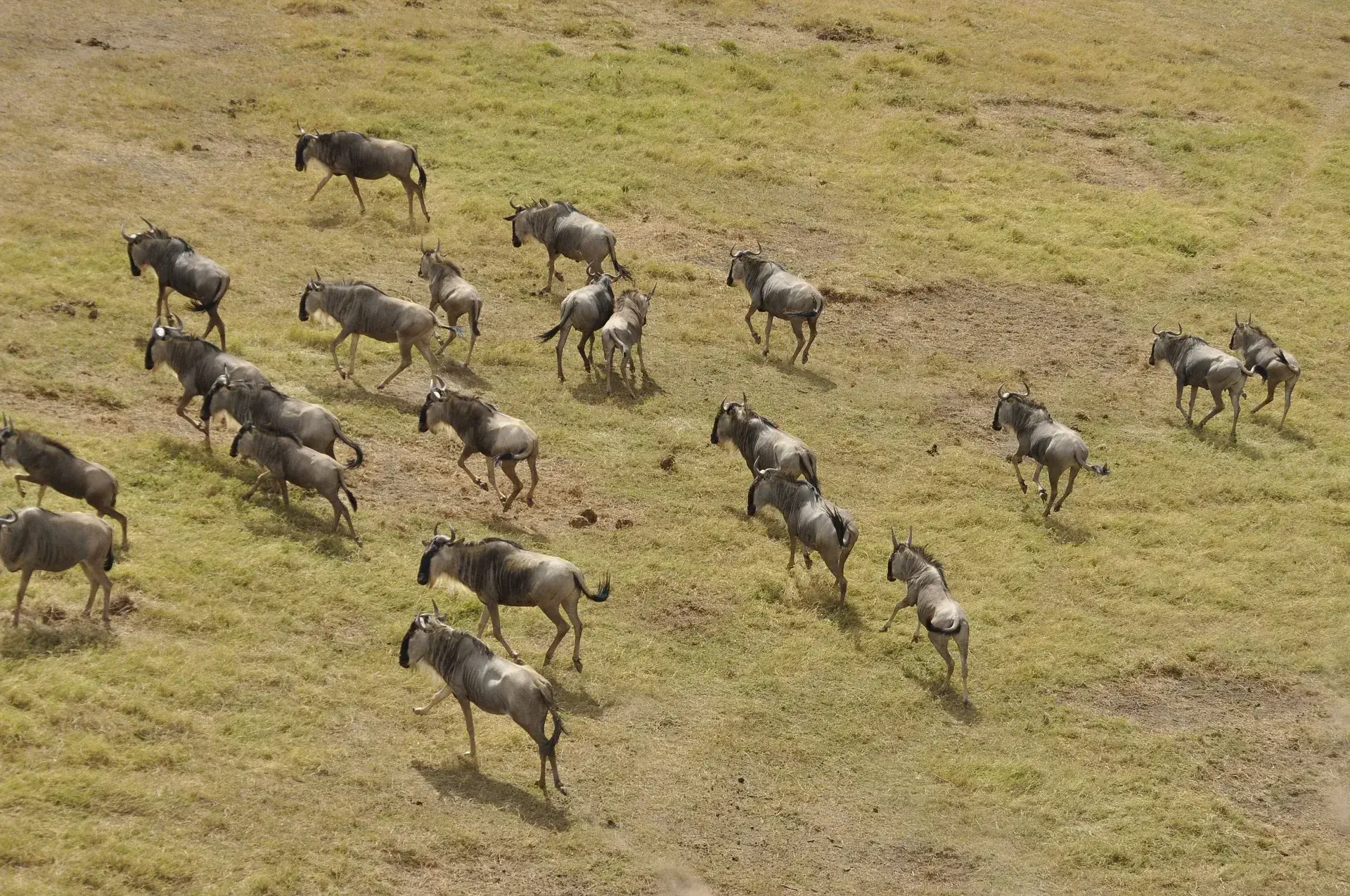
The Great Wildebeest Migration
One of the most sought-after experiences for wildlife and nature enthusiasts, the Great Migration is the ever-moving circular migration of over a million animals across the Serengeti-Mara ecosystem. The constant movement of columns of wildebeest, joined by a host of companions, follows an age-old route in search of grazing and water. After calving in the southern part of Tanzania's Serengeti near the Ngorongoro Conservation Area, the animals journey through the Serengeti up and around in a clockwise direction towards the Masai Mara in Kenya, before returning once again near the end of the year. Along the way, high drama is always present, as thousands of animals are taken by predators and thousands more are born, replenishing the numbers and sustaining the circle of life.
Major Events of the Migration
River crossing
One of the best places to observe the wildebeest migration is at the Mara River. The Mara River runs through Kenya and Tanzania and lies directly in the path of migration for multiple animals in the Masai Mara & Serengeti National Park. It is also a vital part of the river system that brings water to the region.The wildebeests’ crossing at this river is celebrated as one of the most spectacular points to observe it. The animals often cross the river multiple times during the migration, following the rainfall to get to the best grazing areas and it is a perilous crossing. The crossing itself takes a great deal of strength and agility to maneuver up and down steps or slick riverbanks and through the often heavy currents of the water. Crocodiles are looming just under the surface as well to snatch up any unsuspecting prey. Even if an individual makes it across the river in one piece, there are often lions or other predators waiting to pick off any weaker members of the group. Huge herds cross at once, and the mass of bodies and frantic scramble across the river is amazing!
By July or August, many of the herds have reached the Mara River for their crossing, but others will continue to cross through October. Also, just because a herd has crossed once to the north does not mean they might not cross again to the south during their migration period if the grass looks lush enough to take the risk again.
Timing your trip can be tricky because there’s no guarantee that a herd will decide to cross at a particular time. While July-September is the peak crossing time at the Mara River, relying on local knowledge of the movements of the herds can give you a better chance of seeing the river crossing when you are there as well.
Calving season
Calving usually takes place between January and February of each year. In January the herds begin making their way to the south of the Serengeti after the rains start falling. Calving Season is a time where kills are plenty due to the large number of vulnerable calves
The herds spend the majority of these three months in the Ndutu and Ngorongoro Conservation areas, although not within the crater itself. Many years ago, volcanoes in the area would erupt and the volcanic ashes that are left behind have led to the soil being rich in nutrients meaning that the grass that grows here is perfect for young wildebeest to munch on and build up their strength in the first few weeks of their lives.
The zebra and gazelle that join the thousands of wildebeest on their journey eat the grass shoots that are less appetizing to the baby wildebeest, leaving behind only the most nutrient-rich grass shoots that are freshly sprouted and soft enough for young wildebeest mouths to pull from the earth. These grasses are also said to help aid the wildebeest mothers in lactating and making sure their milk is full of the goodness needed to raise strong and healthy babies.
The herds spend the majority of these three months in the Ndutu and Ngorongoro Conservation areas, although not within the crater itself. Many years ago, volcanoes in the area would erupt and the volcanic ashes that are left behind have led to the soil being rich in nutrients meaning that the grass that grows here is perfect for young wildebeest to munch on and build up their strength in the first few weeks of their lives.
The zebra and gazelle that join the thousands of wildebeest on their journey eat the grass shoots that are less appetizing to the baby wildebeest, leaving behind only the most nutrient-rich grass shoots that are freshly sprouted and soft enough for young wildebeest mouths to pull from the earth. These grasses are also said to help aid the wildebeest mothers in lactating and making sure their milk is full of the goodness needed to raise strong and healthy babies.


